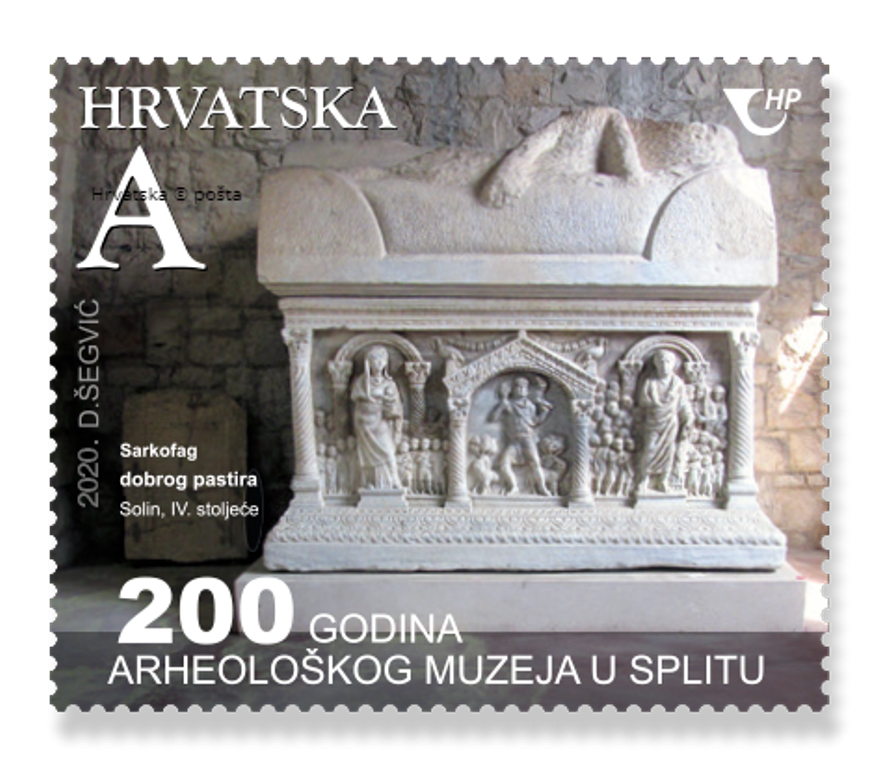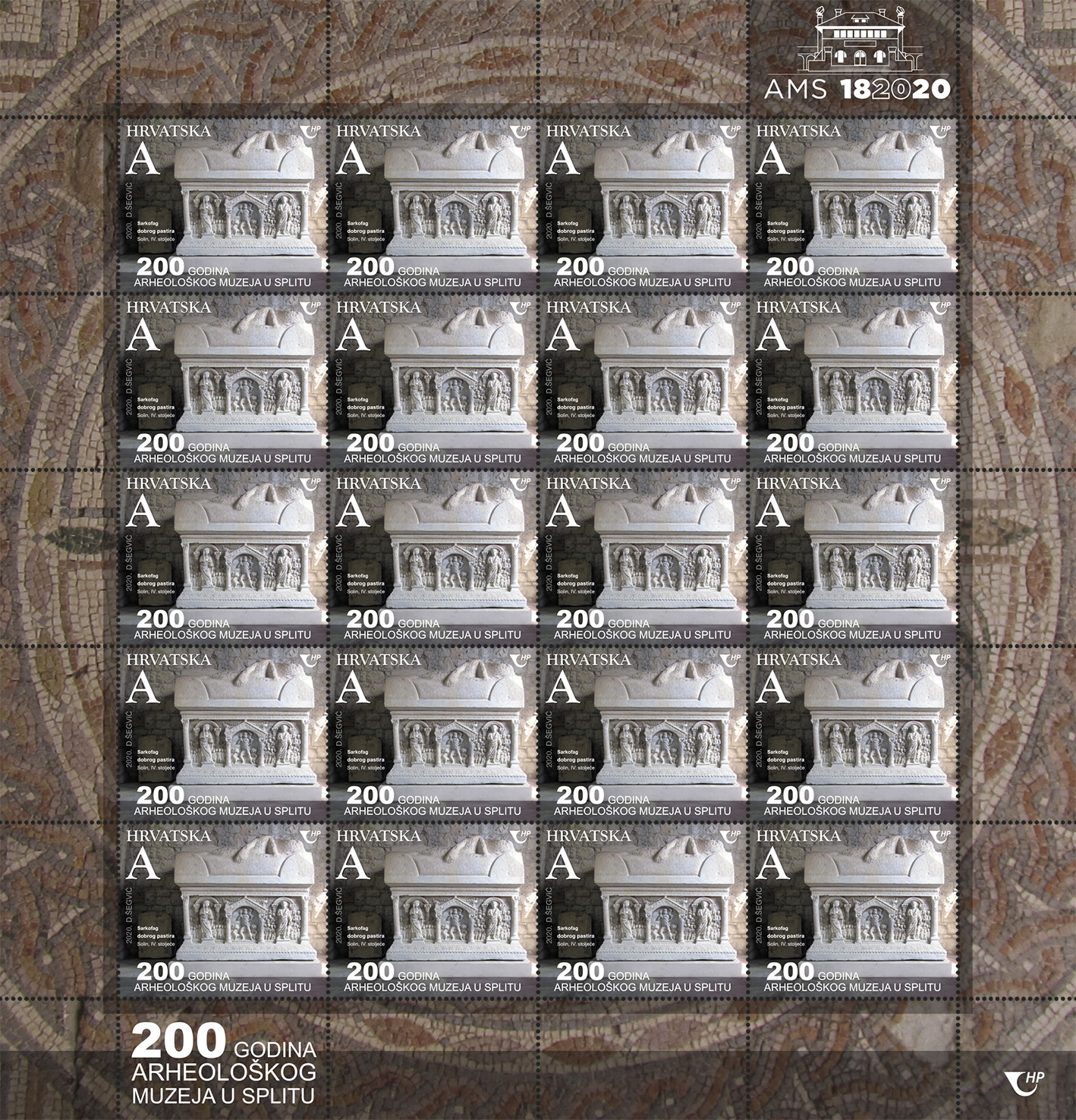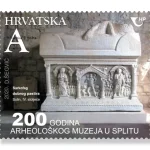
August 15, 2020 – On August 17, 2020, the Croatian Post will launch a new commemorative postage stamp for the 200th anniversary of the Split Archaeological Museum.
Dalmacija Danas reports that the motif on the stamps is the sarcophagus of the good shepherd, which originates from Solin, from the 4th century. The author of the stamp is Duje Segvic, a designer from Split. The value of the stamp is marked with the letter “A”, which corresponds to the amount of postage for a letter weighing up to 50 g in domestic traffic and for a postcard in domestic traffic.
The stamp was printed in a circulation of 100,000 copies and was issued in a sheet of 20 stamps. The Croatian Post also issued a First Day Cover (FDC). The first-day stamp will be in use on August 17 and 18, 2020, at a separate philately counter at the 10000 Zagreb Post Office.
The Archaeological Museum in Split was founded on August 22, 1820. This is a significant date not only for Croatian archeology and all Croatian museums, but also for the city of Split, the entire region, and the Republic of Croatia. At the same time, the Archaeological Museum in Split is the oldest museum institution in Southeast Europe.

The museum building, however, was not immediately located at the present site. Instead, until 1868, the building was located at the east wall of Diocletian’s Palace, of which nothing has been preserved today. Today’s museum building was built just before the First World War.
In March 1912, construction began on a new museum designed by Viennese architects August Kirstein and Friedrich Ohmann, which lasted until June 1914. Thus, the building of the Split Archaeological Museum, along with the building of the Museum of Arts and Crafts in Zagreb from 1888 and partly the Strossmayer Gallery of Old Masters of the Croatian Academy of Sciences and Arts from 1880, became the oldest purpose-built building, i.e., built exclusively for a museum in Croatia.
The new building has a large exhibition hall for smaller objects, a garden with a lapidary was intended for stone monuments, while in the basement there were depots. The available space met the needs of the museum until the 1960s when there were thoughts of expanding it by building a new building in the back garden.
Until 1910, when the Ethnographic Museum was founded, there was no other museum-gallery institution in Split than the Archaeological Museum. Thus, it collected the testimonies of Croatia’s past that would not otherwise belong to it in terms of subject matter, with the care of its directors who were interested not only in archeology but also in history, old and rare books, maps, archives, and works of art.
To read more about lifestyle in Croatia, follow TCN’s dedicated page.








